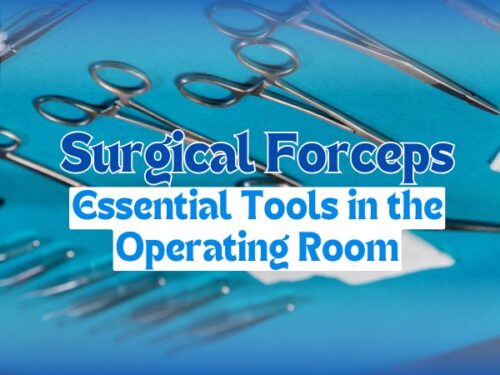Some patients are medically unable to eat naturally on their own due to several reasons. These medical problems can make it difficult to provide them with the essential nutrients and medications which are significant for their fast recovery. In this case, feeding tubes are used which help to provide these nutrients and medications to the patients. In this case, nutrients are supplied directly to the stomach or small intestine with the help of a small flexible tube that is inserted into the body through the nose or belly. This tube-feeding therapy is also known as enteral nutrition. Misconnections of enteral feeding lines can prove to be disastrous and can even lead to the death of the patient. Therefore, it is important to prevent these misconnections to ensure the safety of the patients. For this purpose, the ENFit connectors are going to be used worldwide which will impact all the enteral feeding products in the world.

ENFit connector
What are enteral feeding misconnections?
The problem started in 2006 when it was reported that the compatibility of medical devices across systems was alarming. This could lead to wrong connections that could be extremely dangerous for the patients and even life-threatening.
Many people died in the past due to the misconnections between enteral and non-enteral devices. The misconnections of the enteral feeding lines can prove disastrous. For instance, if a feeding tube is mistakenly connected to a tracheostomy tube, it can result in the delivery of milk to an infant’s lungs which can cause the death of the patient. The cause of these misconnections is that the enteral connectors can be mistakenly connected to a non-enteral system. This can cause serious complications and even the death of the patient.
Therefore there was a need to adopt a standard connector that did not connect to any other non-enteral system. For this reason, ENFit connectors have been developed that reduce the risk of connectivity with any other connectors of clinical use.
These connectors prevent enteral feeding or medication through the wrong route. Unlike the old syringes in which the tip of the male syringe is fitted into the female syringes, the ENFit connectors have a female tip that connects around a male connector on the feeding tube.
Simply put, these connectors are incompatible with other unrelated delivery systems including trach tubes, IV lines, and, catheters. These types of misconnections with non-enteral devices can cause drastic results. By eliminating the chances of misconnections, the ENFit connecter ensures the patient’s safety.
Due to the potential risk of misconnections between enteral and non-enteral medical devices and accidental disconnections, the Global Enteral Device Supplier Association (GEDSA) designed these ENFit connectors to improve patient safety and eliminate the risk of misconnections and accidental disconnections. ENFit was a global initiative in which this connector was developed under the supervision of regulators, manufacturers, and clinicians. It was developed as part of the stay connected initiative. To ensure the safety of the patient, this ENFit connector will be changed to all enteral feeding products including gravity sets, syringes, pump sets, extension sets, and feeding tubes. Nearly every person who uses these enteral feeding products will be impacted.
How does an ENFit connector work?
The ENFit connector connects by twisting together instead of pushing in to connect, and it only fits with the other ENFit tube feeding supplies. This helps to eliminate the risk of connecting with any other non-enteral device and its consequent risks. The main differences between the ENFit connector and other connectors include the following.
The ENFit connector consists of male and female connectors. The syringe includes a female tip and the tubing includes a male tip. Both of these are incompatible with any other non-enteral lines.
The second difference is that the tubing is locking instead of slipping. Also, the color is not mandatory for these which makes it easier for everyone to distinguish between enteral and non-enteral lines.

The design of an ENFit connector
What are the benefits of using an ENFit connector?
The ENFit connector provides several benefits as compared to the old connectors used for enteral feeding. These benefits are explained below.
-
Standardized connectors
The standardized connector across the industry promotes familiarity in healthcare settings. This can help to make the healthcare workers familiar with the ENFit connector.
-
Fewer chances of misconnections
As the ENFit connector has a unique design, it helps to make sure that the enteral syringes and tubing can only cannot to feeding tubes and not any non-enteral devices. This means that these connectors do not connect with any other connectors for any other clinical use. This eliminates the risk of misconnections and ensures patient safety.
-
Reduced accidental disconnections
The accidental pulling away of the connector from the tubing is prevented with the help of locking threads. This locking feature ensures the proper connection that stays in its place. This reduces the risk of accidental disconnections and helps to ensure the safety of the patient.
-
Reduced leaks
The risks of leaks at the connector sites are reduced due to the more secure fit of the ENFit connector.
-
ISO Certified
The ENFit connectors pass through a rigorous validation process including computer-aided design (CAD), human factors, and usability testing that confirm that the connectors are according to the standards provided by the International standards organization (ISO).

ENFit connector use
Conclusion
The ENFit connector is a standardized connector that is used instead of the old connectors. In the past, many patients died due to misconnections and accidental disconnections of the connectors. The cases were underreported. But the risk of further misconnections could be life-threatening for so many patients.
For this reason, ENFit connectors were developed. Due to the unique design of the connector, the risk of misconnections between enteral and non-enteral devices eliminates. This helps to ensure the safety of the patients. Also with the help of locking threads, it reduces the possibility of accidental disconnections.
The use of standardized connectors also helps to create familiarity among healthcare workers. Due to their benefits in eliminating misconnections and reducing accidental misconnections, the ENFit connectors are a necessity and must be changed worldwide to ensure the safety of the patients.

PhD Scholar (Pharmaceutics), MPhil (Pharmaceutics), Pharm D, B. Sc.
Uzma Zafar is a dedicated and highly motivated pharmaceutical professional currently pursuing her PhD in Pharmaceutics at the Punjab University College of Pharmacy, University of the Punjab. With a comprehensive academic and research background, Uzma has consistently excelled in her studies, securing first division throughout her educational journey.
Uzma’s passion for the pharmaceutical field is evident from her active engagement during her Doctor of Pharmacy (Pharm.D) program, where she not only mastered industrial techniques and clinical case studies but also delved into marketing strategies and management skills.

















